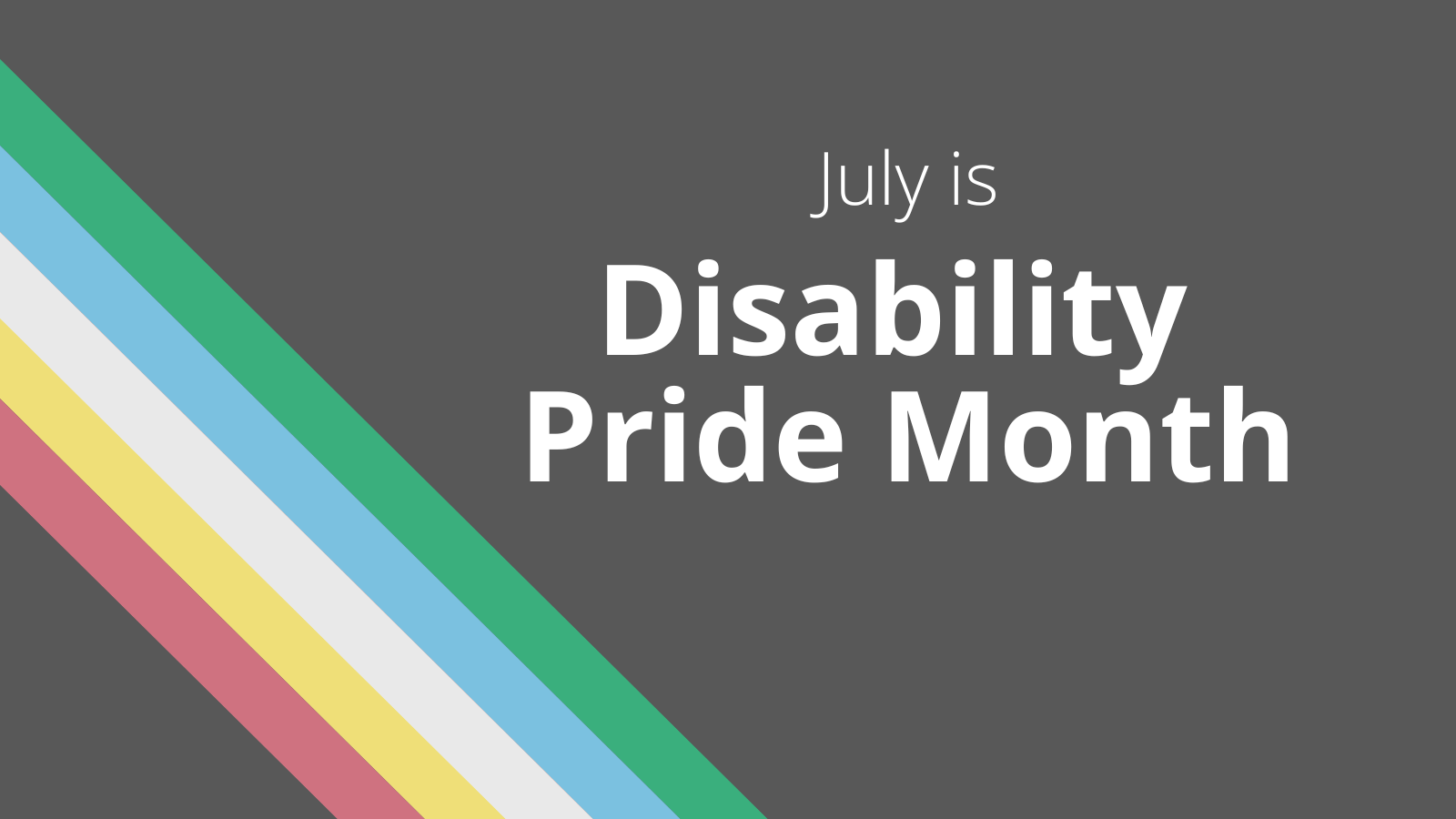Trigger/content warning: neglect, abuse, suicide, and eugenics
The summer months are filled with many holidays and celebrations. In June, we celebrate Pride Month and observe Juneteenth. In July, we celebrate America’s Independence Day. And by August, we’re celebrating the beginning of a new school year. But did you know July is also Disability Pride Month?
What is Disability Pride Month?
Disability Pride Month is a worldwide celebration that takes place every July. It allows the disability community to come together to celebrate an important part of their identity and continue to combat stereotypes and ableism still rampant in society today.
What is the history of Disability Pride Month?
The month-long observation was first established in 1990 following the passage of the Americans With Disabilities Act (ADA) on July 26, 1990. This piece of legislation guaranteed protections against discrimination to individuals with disabilities in all areas of public life.
The Disability Pride Month flag
Like many other communities and celebrations, Disability Pride Month is represented by its own flag. The original Disability Pride Flag was designed in 2017 by Valencian dancer Eros Recio. The flag was modified in 2021 by disabled woman Ann Magill to accommodate feedback from the disability community regarding some of the visual elements.

Each element of the flag represents important groups within the disability community. The diagonal design represents “cutting across” the barriers that separate disabled individuals from non-disabled individuals. The colors represent the following:
- Grey/black background: mourning for those who have died as a result of ableism, negligence, abuse, suicide, eugenics or illness
- Green: Sensory disabilities
- Blue: Mental health disabilities
- White: Non-visible and undiagnosed disabilities
- Gold: Neurodiversity
- Red: Physical disabilities
Why Disability Pride Month belongs in schools
During the 2021-2022 school year, 7.3 million students ages 3-21 were identified with a disability and qualified for special education services under the IDEA. We serve many more children with disabilities in our schools who may qualify for 504 support services or may not qualify for in-school support services but still identify as an individual with a disability. Thus, many of the students in our classrooms may identify as part of the disability community, and providing an environment for them to celebrate this part of their identity can be incredibly transformative. For non-disabled students, learning about disability pride helps individuals understand allyship. It also teaches them that disability is not a negative thing, as any one of us may join the disability community at any point in life, whether temporarily or permanently.
Ways to celebrate Disability Pride Month with students
- Build a Disability Pride section in your school or classroom library and include disabled authors. You may even encourage students to write their own stories.
- Invite disabled leaders to speak to your class. You may have someone in mind from your local community, or there are many disabled leaders who speak on a variety of topics.
- Hold a Disability Pride parade in your classroom or school. Or check out a Disability Pride parade or celebration in your area.
- Screen a positive portrayal of disability in the media and works created by the disability community, such as Crip Camp or CODA.
- Learn more about the history of the Disability Rights Movement.
- Discuss the meaning of pride with your students and how stereotypes and ableism negatively impact the disability community.
Pride helps us accept and celebrate who we are. This is especially important for supporting children with disabilities to understand that there is nothing wrong with them or their disability and that there is so much success and joy in the disability community. Incorporating discussions on disability early on helps children develop a nuanced understanding of disability as a form of diversity and celebrate themselves and their peers for their authentic selves, including disability and all intersectional identities.
How will you celebrate Disability Pride Month? Let us know in the comments!
For more articles like this, be sure to subscribe to our newsletters to find out when they’re posted!

